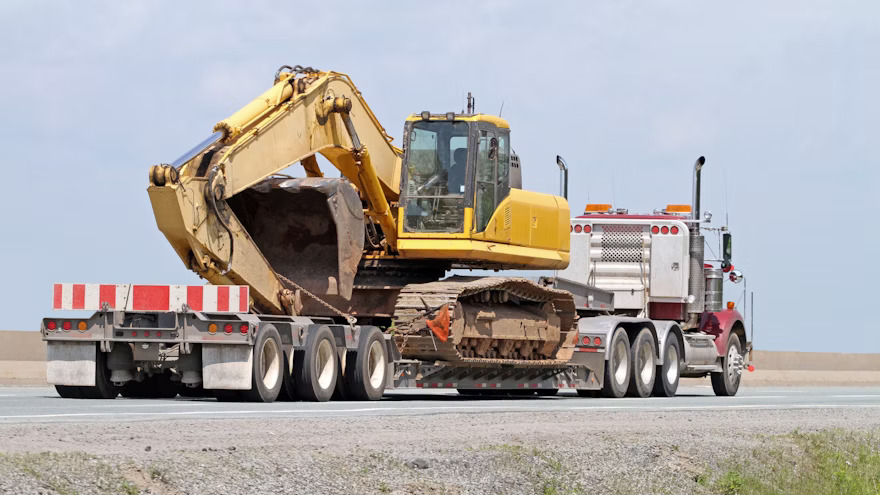Have you ever found it challenging to transport heavy equipment on the trailer?
It is indeed a daunting task that needs a lot of effort, planning and strategy to carry out.
Heavy equipment transportation is a common way to deliver equipment to the desired destinations. However, most of the time, the delivery becomes late or causes some issues with the equipment, which may ultimately affect the productivity and efficiency of the equipment during its operation. Following best practices is essential whether you’re transporting industrial tools, agricultural machinery, or construction equipment.
Selecting the Best Trailer
First and foremost, the initial step is choosing the proper trailer. The weight, dimensions, and characteristics of the equipment must match the capacity, size, and features of the trailer. Any kind of misalignment could cause instability during shipment, endangering both the equipment and everyone’s safety. To avoid such an issue, you first need to analyze the requirements of the trailer and the equipment you are going to transport through the trailer. For instance, if you are transporting a motor grader for sale to another state, analyze which of the models is this along with its all measurements including weight, height, and size. Also, make sure to double-check everything before even starting loading your equipment on the trailer.
Equipment Securing
Once you select the right trailer, you need to haul and secure the equipment. Securing the equipment in the trailer is an important step to avoid any tipping over or damage to the equipment itself. To avoid shifting, tilting, or sliding during transit, proper strapping, chaining, and bracing are a must. To keep the equipment balanced, distribute the weight equally, and utilize padding or cushioning to stop vibrations and impacts. You also need to cover the equipment with a plastic sheet to avoid weather damage to the equipment. If the transportation route gets rains or snow, your equipment will get serious deterioration due to the moisture traps inside the components. It will ultimately affect the performance of the equipment on the job site.
Planning and clearance of the route
Consider the weight, width, and height of the equipment as you meticulously plan your path. Be cautious of low bridges, confined spaces, and areas with weight restrictions. Accidents or legal issues may result from failing to take these variables into consideration. For safe navigation, use GPS gadgets made for big loads. Also, inform each and every detail of the route to the trailer driver. Instruct them prior to the head-off so that they may get mentally and physically ready for the route and upcoming hurdles.
Maintenance of Hauling Vehicle
Maintenance of the hauling vehicle must be in excellent working order. It is necessary to perform routine maintenance on hydraulics, tires, brakes, and lights. In addition to adding to the wait time, a breakdown in transportation puts passengers’ safety at risk. Before loading the equipment on the trailer, you must check and inspect the working condition in detail. If you find any minor issue, immediately fix it to avoid any major consequences during the transportation.
Legal Compliance
It is mandatory to follow all applicable local, state, and federal laws. Make sure you have the appropriate licenses to transport big loads on the main roads and highways. Legal standards that are disregarded may incur costly fines, lengthy delays, and damage to one’s reputation.
Pilot and Assistant Vehicles
Pilot or escort vehicles may be necessary for particularly heavy or wide loads. These vehicles add an extra level of safety by warning other drivers of the impending large load. Moreover, they make difficult routes easier to navigate and guarantee a smoother trip.
Monitoring and communication
Keep the driver and any helping crew members in constant communication. Use hands-free or two-way radios to efficiently transmit instructions and cautions. Investing in tracking technology will also enable you to keep an eye on the location and health of your equipment in real time.
Weather and Environmental Factors
Pay close attention to weather reports and the state of the environment. The stability of the load might be affected by strong winds, rain, and other bad weather conditions. If necessary, alter your transport timetable to prevent endangering the equipment.
Footnote
The choice of the trailer, the security of the equipment, route planning, maintenance, compliance, safety precautions, and good communication are all important components of heavy equipment transportation. Your equipment will arrive at its destination securely and effectively if you carefully adhere to these best practices.

